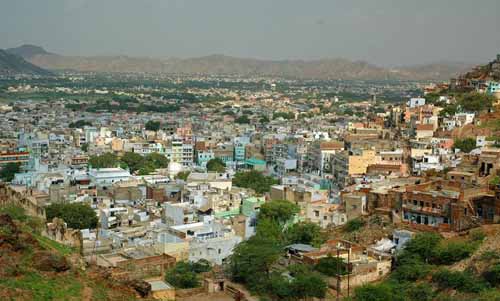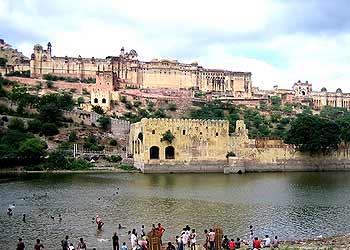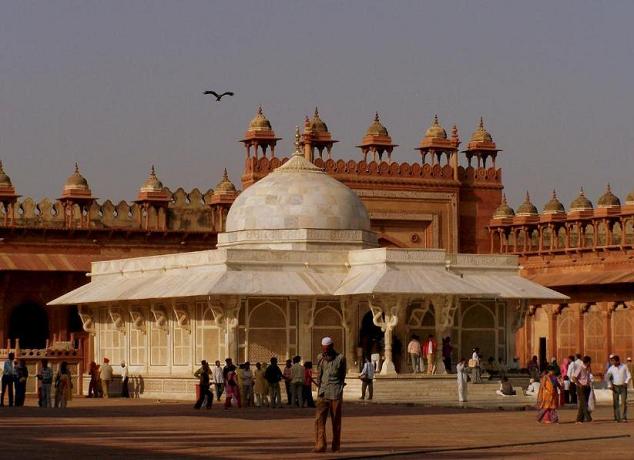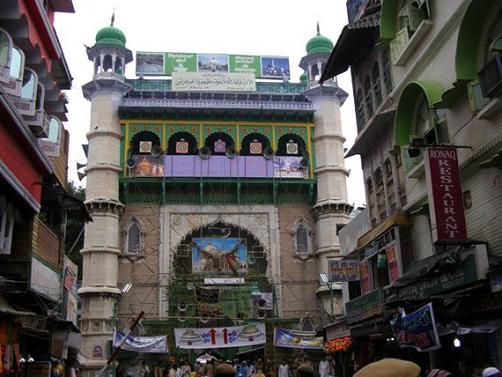
History of ajmerajmer is one of the most sacred places in India. The history of ajmer dates back to the 7th century when it was established as by Ajaipal Chauhan. It is a city rich in history. Surrounded by the Aravali hills it lies 130 kilometers west of Jaipur. It was always the stronghold of the Chauhan Rajputs. They claimed that they were the descendants of the Agni kula. ajmer was with them till the 12th century. ajmer was established in the early seventh centuary by Ajaipal Chauhan. Ajaipal chauhan constructed a tall fort here and named the place Ajaimeru, or invincible hill , because here he built India,s first hill fort Taragah. ajmer was a chauhan Stronghold till 1194. The Only remains of their times are the fort and the beautiful Anasagar lake built in 1150 by Anaji. The legendry Prithviraj, last of the Chauhans, is the inspiration for many heroic ballads sung even today in the vilages of Rajasthan.  It was during the reign of Prithviraj, in 1191, that Muhammad of Ghori invaded India. Prithviraj died fighting the sultan's army, and with the establishment of the Sultanate in Delhi, a new era began. ajmer remained under the Sultanate till 1326. Thereafter, it became a bone of contention between the Sultans of Delhi, the Ranas of Mewar, the Rathors of Marwar and the Sultans of Gujarat. Peace was restored with the accession of Akbar to the Mughal throne in 1556. He made ajmer a fullfledged province, and, in pursuance of his policy toward the Rajputs, the base for his operations in Rajputana. He fortified the city, but only parts of the 4045-yard (3735-m) long wall remain. His palace, the Daulat Khana, houses ceding the Government Museum.Akbar's son, Jahangir,lived in ajmer from 1613 to 1616. His palace, the Daulat Bagh, is now in ruins. The celebrated English ambassador during to the Mughal court, Sir Thomas Roe, was received here by the emperor. During the course of his extended stay,Roe met the emperor several times and showered him with gifts varying from maps to a coach. But he failed to conclude a commercial treaty between England and the Mughal empire. Roe's detailed journal contains descriptions of Jahangir's palaces in ajmer.  In 1659 a battle was fought in ajmer between the Mughal princes, Aurangzeb and Dara Sukoh, during which Taragarh was greatly damaged. In the first half of the 18th century, ajmer was affected by the political chaos in Delhi. At times it was the Rathors who reigned here, at others the emperors of Delhi. In 1755, the situation became more complex with the involvement of the Marathas. Finally, in 1818, the Marathas ceded ajmer to Sir David Ochterlony and, as part of the British empire, it remained under the care of successive superintendents. With the reorganization of the princely states in 1947, ajmer became a part of Rajasthan. The kingdom of ajmer was ruled by Prithviraj Chauhan, Raja of Delhi and ajmer. In the year 1191 the First Battle of Tarain started between Prithviraj Chauhan and Mohammed Ghori, an Afghan governor. In the second Battle of Tarain the Afghan forces crushed the Rajput cavalry and the emblematic figure of Rajput heroism was taken a prisoner and put to death. The name, Prithviraj Chauhan still remembered in the domain of Rajasthan with great respect because he was the last Hindu king of Delhi. His chivalry, intelligence and valor made him one of the most revered kings in Rajasthan.  The deeds of Prithviraj Chauhan , his fierce resistance, his desperate battles and his proud honour makes an epic poem made of 69 books, the `Prithviraj Raso which was recited by bards from one kingdom to the other. The poems continue to immortalize the spirit of Prithviraj Chauhan. ajmer remained under the reign of Delhi Sultanate till 1326. After the Sultanate rule several battles ensued to between various clans to conquer ajmer. Political stability returned only after Akbar, the Mughal Emperor ascended the throne in Delhi. It became an important center for the Mughal emperor, as he was a devout follower of Moinuddin Chisti. The dargah sharif was quite important to him. He fortified the city and built his own palace here, Daulat Khana. Jahangir also lived in ajmer from 1613 to 1616. After the Mughal rule it was under the control of the Marathas. But with the advent of the British the scenario changed. Ultimately in the 19th century, it became the base for the British operations. In the year 1947 it was merged with the state of Rajasthan and was stopped being recognized as a princely state.  ajmer was ruled by the great Raja Prithvi Chauhan the last Hindu king of Delhi, until his defeat in 1192 . After having changed hands several times, in 1556 ajmer finally came under the Mughal Emperor, Akbar who used it as the headquarters for his vitally important operations in Rajasthan. It was here, a generation later, that the first British Ambassador, Sir Thomas Roe, had an historic meeting with Emperor Jahangir in 1615, and it was here, half a century later, that the critical battle between the Mughals crown prince, Dara Shukoh, and the usurper, was fought. Later Emperor, Aurangzeb, took place. In the 19th century, ajmer became a little British enclave, from where the British Chief Commissioner for Rajputana kept and eagle eye on all the Rajput Kingdoms. Today ajmer is, frankly, not the most charming of towns, unlike its hayday in the 17th century when it was Emperor Shah Jahan pleasure resort.. |

